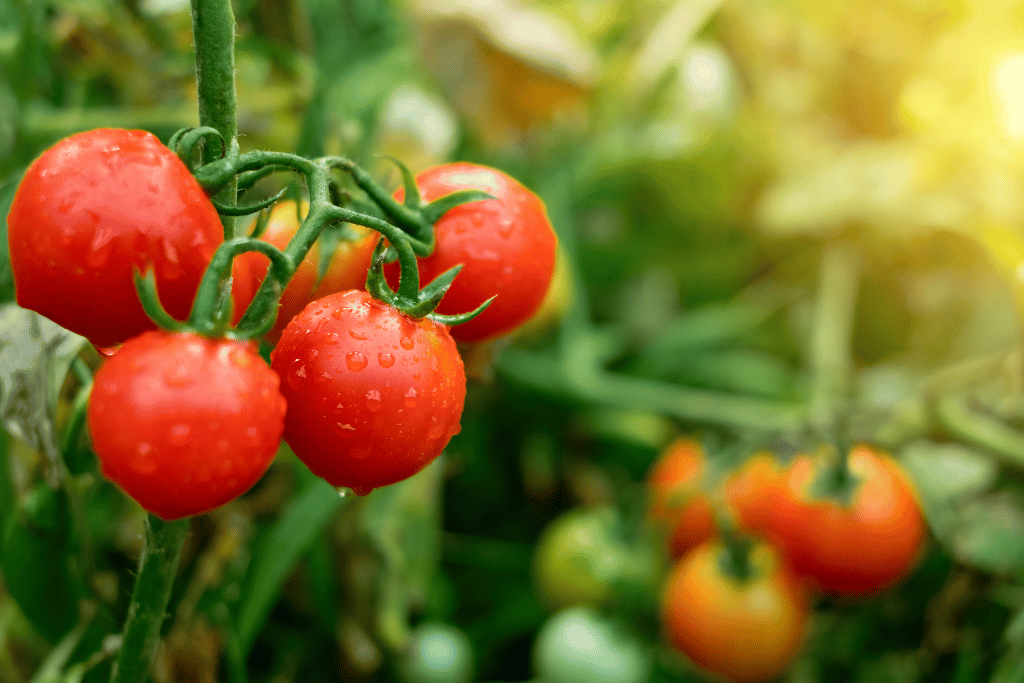Most people are fortunate enough to have some west facing windows in their home. And if you just so happen to be a plantophile, like myself, you’re probably always looking for more growing space.
A west facing window is the perfect spot for all sorts of indoor plants that require partial sun, direct or indirect light. They receive afternoon light that is warmer and more intense than the morning sun that shines through an east facing window. South facing windows receive full sun for the entire day, so a west facing window is a happy medium for plants that prefer partial sun and thrive in warm temperatures.

Plants within three feet of a west facing window receive direct sunlight. If kept five or more feet away, or the window is covered by a drape, plants will still get a good dose of indirect light through the afternoon hours.
Always make sure to refer to your plant’s specific care requirements when planning where to keep it. This guide will help you take all of these factors into consideration and select the perfect indoor plant for a west facing window.
Jade Plant (Crassula ovata)
One of the world’s most popular houseplants, jade aka moneyplant, lucky plant or money tree, is low-maintenance and a cinch to care for. The charming succulent is an ideal plant for beginner gardeners and will happily grow in a west facing window.
Jade plants need about six hours of bright light exposure per day. Younger plants should receive bright, indirect light whereas mature jade plants are able to withstand more direct light. It doesn’t require full sun, so the warm afternoon sun of a west facing window will be the best home for your jade plant to thrive.
Try propagating a plant yourself and gifting it to a friend, for good luck!
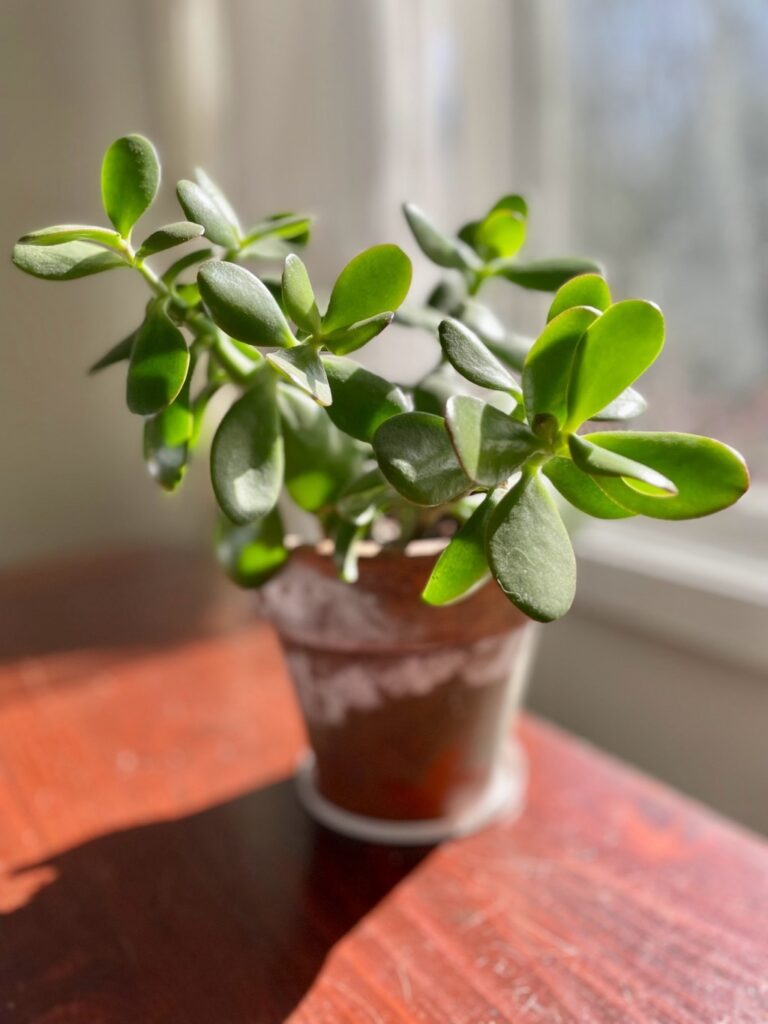
Snake Plant (Dracaena trifasciata)
Another famous houseplant of many names is the snake plant. Depending on location you may have heard varying common names for this plant: Mother-in-law’s tongue, Saint George’s sword or viper’s bowstring hemp.
No matter how you call this unique plant, it will prosper in a west facing window. Living up to its reptilian common name, warm, direct sunlight are the ideal conditions for snake plants.
Snake plants are tremendous air purifiers and renowned for their resilience, making them an excellent houseplant for caretakers of all levels.
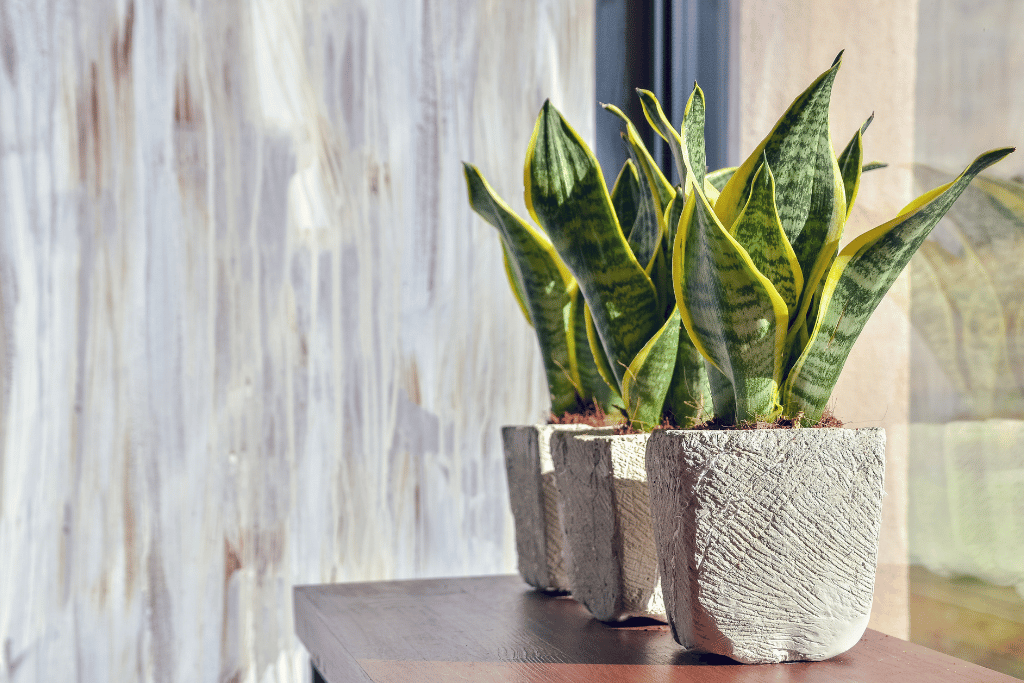
Mint (Mentha)
All varieties of mint make wonderful houseplants. And their growing requirements should warrant a spot in one of your western windows.
Mint is an aggressive grower that does well with warm, direct light. Since they grow so rapidly pots and planters are the best place for them.
With well watered soil and afternoon sun exposure your mint will thrive, serving as a friendly air freshening herb.

Cactus (Cactaceae)
The Cactaceae plant family claims nearly 2,000 different species as members. You can imagine the variety and selection there must be among that amount of relatives.
Fortunately, they are all desert natives and love the heat and direct sun, requiring about 12 hours of light per day. When provided these bare essentials, cacti are extremely easy to care for.
It’s much more common to overwater than underwater a cactus. Make sure you have them in a well-drained succulent/cactus potting mix and watch them flourish in a well lit west facing window.
By the way, have you ever wondered is cactus a vegetable?
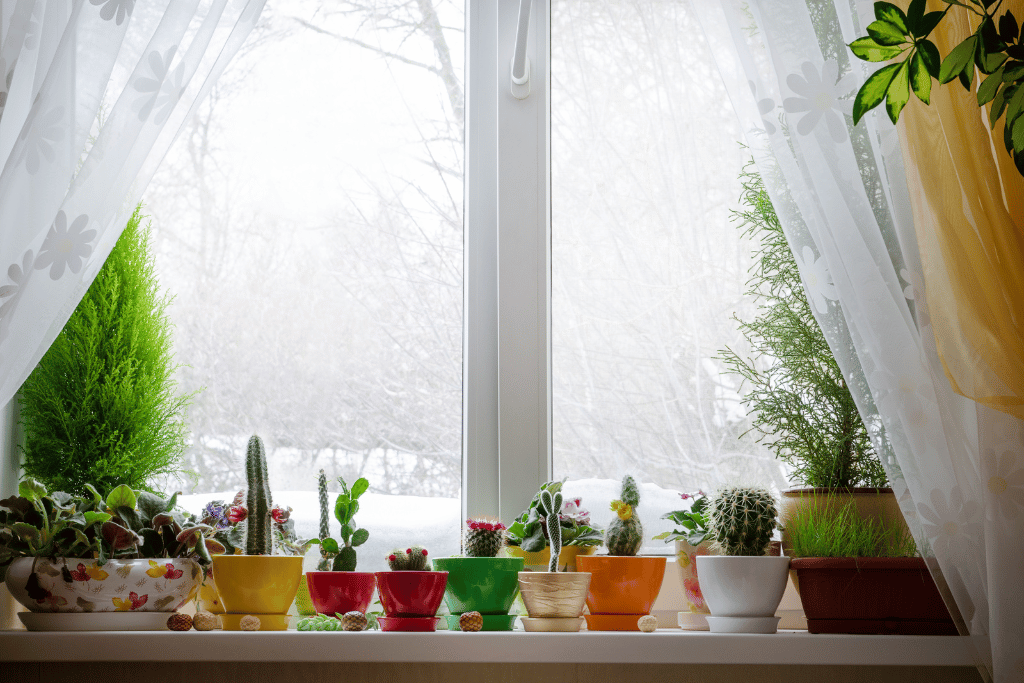
Peace Lilies (Spathiphyllum)
Very popular in homes, peace lilies are incredibly low-maintenance and easy to care for. They prefer bright, indirect light and don’t mind moist soil. They’re pretty resilient, as I can attest, I’ve had the same one for many years now.
They can be propagated easily by division and will benefit from this time to time as a way to preventing overcrowding. I prune mine regularly, snipping out any old, spent leaves and flowers.
The single stemmed, white spade shaped flowers that emerge sporadically are an extra bonus to go along with their air purifying qualities.
It’s hard not to feel peaceful while in the company of this placid plant.
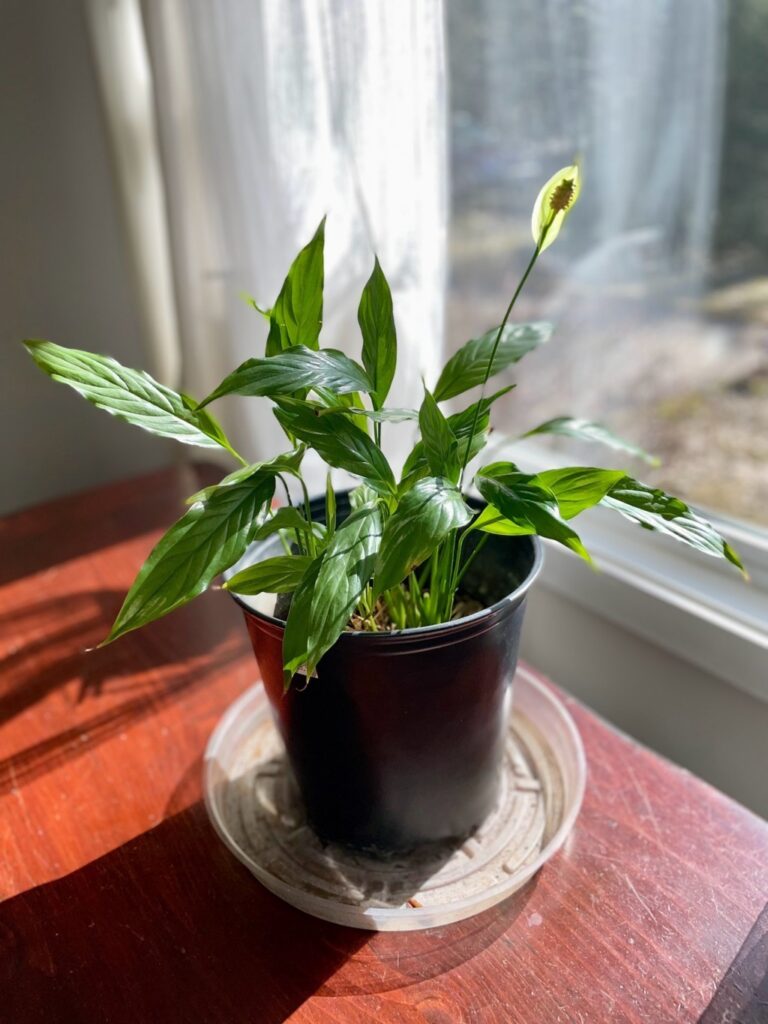
Aloe Vera (Aloe vera)
Well known for its soothing skin care properties, aloe vera is a fun and easy plant to grow right at home. The long fleshy spines grow from a central rosette, continually protruding and proliferating.
Indirect, bright light, warm temperatures and a well-drained soil is the perfect recipe for a successful aloe plant. Find a west facing window that provides filtered light or hang a light drape to lessen the blow of direct sun.
Under these conditions aloe vera will thrive, and the pups it produces from its base are perfect for propagating.
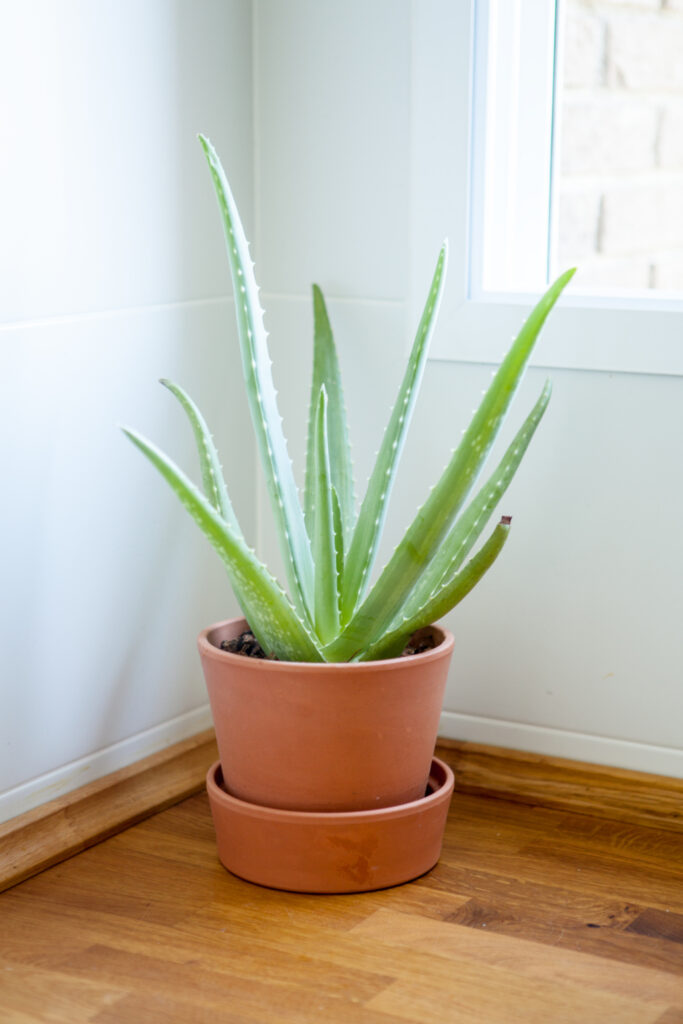
Fiddle Leaf Fig (Ficus lyrata)
Aptly named for their violin shaped leaves, fiddle leaf fig trees bring a stunning presence to your home. When kept inside it rarely flowers or fruits, but the skinny stems and decorative, shiny leaves create an impressive vegetative display.
The fig trees can be a bit fickle if they’re moved around, so keep them happy in a stationary spot in a western window that receives bright, direct sunshine. Throw in well-drained soil and a warm and humid climate and your fiddle leaf figs will flourish.

Kalanchoe
Most species in the Kalanchoe genus require at least 6-8 hours of light per day. Follow your particular species instructions, there are about 125, because some varieties prefer bright, indirect light or bright shade.
For most of the year kalanchoe plants have their pretty little flowers in bloom. It is quite a treat to see a plant that is perpetually blossoming. The brightly colored flowers are complemented perfectly by the shiny, dark green foliage.
To stay in bloom, kalanchoe requires plenty of bright light. A west-facing window is a great place to keep it year round, although it appreciates a bit of relief from direct sun in summer.
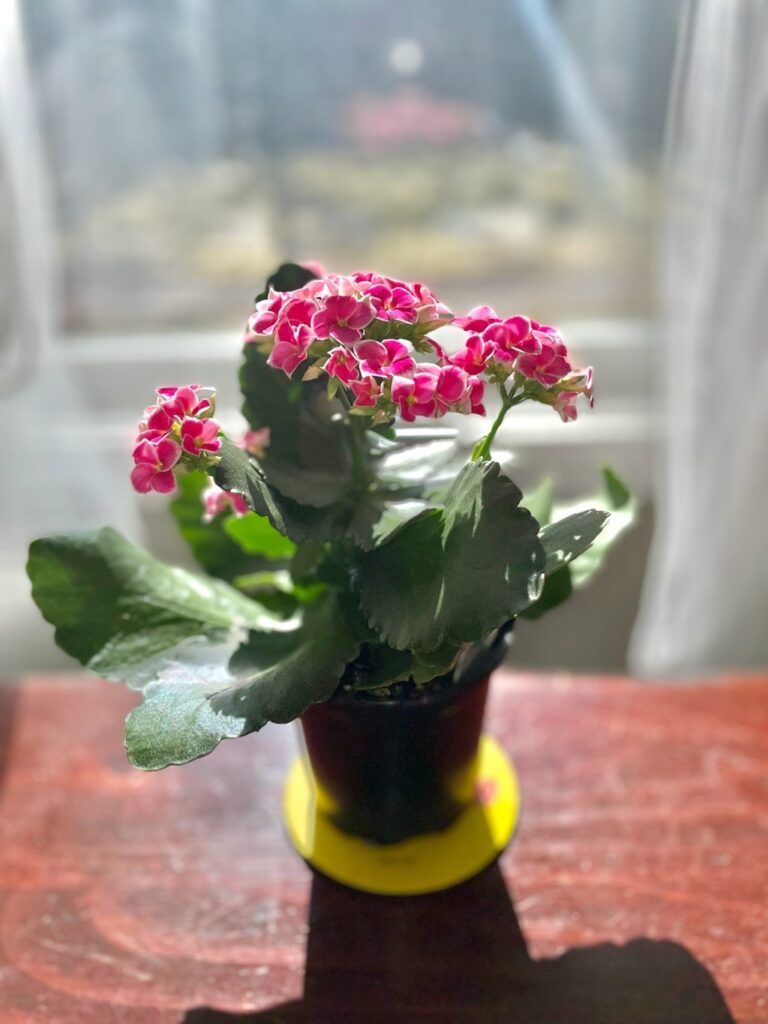
Agave
The genus Agave is well acclimated to hot and dry conditions, hailing from the desert regions of Central America and Mexico. Agave plants grow very slowly, therefore can forego regular waterings, unlike most plants. They will thrive in a hot, brightly lit south or west facing window. It’s a pleasure to watch an agave plant slowly but surely mature by shooting up its fleshy lance like leaves.

Ti Plant (Cordyline fruticosa)
The evergreen flowering plant is native and culturally important to the South Pacific Islands. There, Ti plant is grown for food, traditional medicine and as an ornamental. It goes by a few different common names; Ti plant, palm lily and cabbage palm.
The vibrant foliage is incredibly attractive and comes in shades of pink, red, orange, green and brown. Ti plants love the warm temperatures and full sun of a west facing window, which helps brighten and sustain their brilliant leaves.

String of Pearls (Curio rowleyanus)
This curious flowering plant is native to southwest Africa and belongs to the Asteraceae family. True to its daisy relatives, this creeping succulent vine blooms in the summer, revealing a number of small white flower clusters that smell of pleasant spices.
While a west facing window works perfectly for the string of pearls plant during the winter, it may become too hot in the summer. String of pearls prefers to get 6-8 hours of sunlight regardless, so an east facing window, where the morning sun is less intense may be better for the warm months.

Jasmine (Jasminum)
The genus Jasminum is a group of shrub and vine plants from the same family as the olive (Oleaceae.) The tropical flowering plant is traditionally grown outdoors in warm regions. But jasmine can thrive just as well indoors at a west facing window. Just imagine the sweet aroma of jasmine’s dainty white flowers wafting through your home.
Make sure they get about eight hours of direct sunlight per day and the pretty white blossoms will beautify your living space for a long time.

Citrus Tree
To successfully grow an indoor citrus tree, a west facing window might be the best place for it. In order to develop a strong trunk and branches and then have enough energy to flower and fruit, citrus trees need plenty air flow, warmth and light.
If you have a south facing window that gets more sun, set it there. Maintain a steady warm temperature throughout the year and keep the tree fertilized and pruned.
Citrus trees fruit in the winter, so consider supplementing with a grow light to aid development during that time of year.
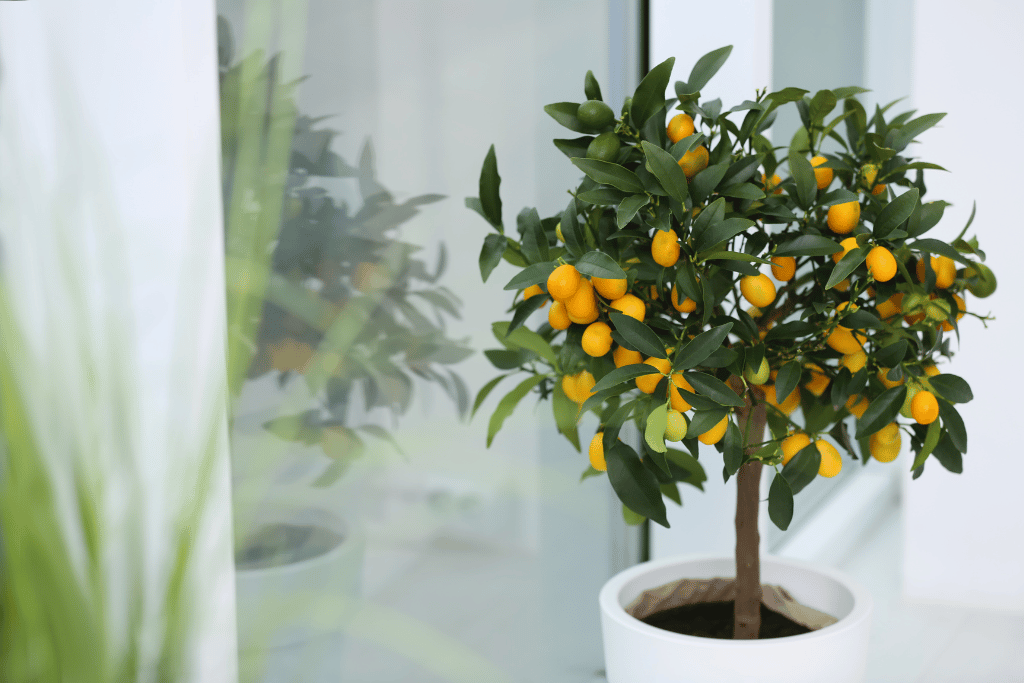
Burro’s Tail (Sedum morganianum)
The succulent burro’s tail is a flowering plant native to a specific region in Mexico. Widely cultivated as a popular houseplant, this unique trailing succulent is often planted in hanging baskets, where the stems droop down to resemble a burro or donkey tail.
Simulate their native desert region by keeping them in a warm, sunny south or west facing window.
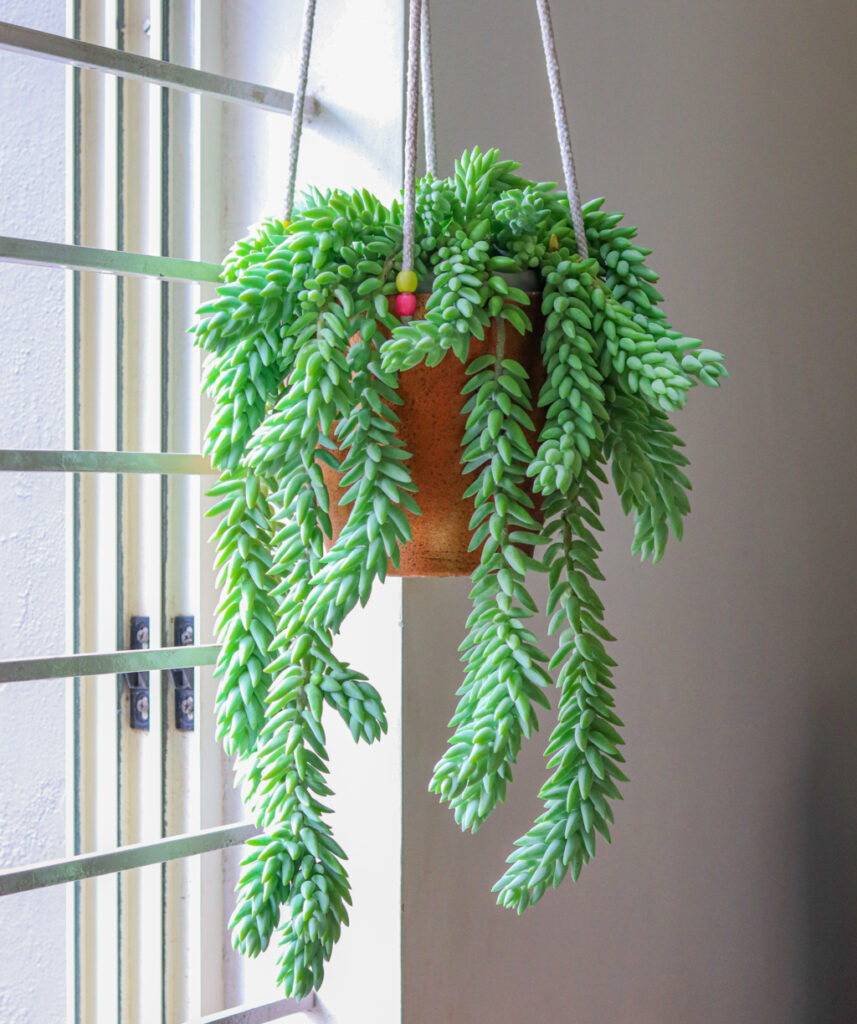
Croton Plants
To me, croton plants look like something right out of Jurassic Park. The variegated, multi-colored leaves just smack something prehistoric. Their attractive and intriguing foliage has made crotons a popular houseplant to keep.
The many different species of croton have varying requirements, but in general they desire warmth and direct, bright sunshine. Plenty of light exposure will ensure their leaves stay vibrant in color.
During spring and summer is the best time to propagate, repot and fertilize your croton plant. Keep them healthy by providing rich, well-drained soil and grow your collection or make little gifts for friends and family through propagation.

Inchplant (Tradescantia zebrina)
When grown in bright light, inchplant develops leaves with incredible candy-like stripes. Shades of purple, pink and green are showcased on the foliage of this Central American and Caribbean native plant. This particular variety has a truly exotic and tropical look.
Reserve a space for this showstopping, creeping plant in a west facing window where it will receive much needed bright light and warmth. Try planting it in a hanging basket and let the colorful leaves and flowers flow out.
Read more about how to propagate wondering jew (Inchplant).

Philodendrons
Philodendron is a rather diverse genus, consisting of close to 500 species, all with unique characteristics. Most varieties, especially those kept indoors, are low-maintenance and will grow perfectly in a west facing window.
Another indoor plant that I’ve maintained for many years, is not fussy at all. Under bright indirect light, philodendrons will continuously shoot out uniquely shaped stems and leaves from their rugged stalks.
Some varieties, like the one I own, can grow quite large. I made the mistake of potting it up to a 5 gallon+ pot and it’s taken off. I prune it every once in a while, which seems to do nothing but encourage more fresh vegetative growth!
Like croton plants, I can envision these exotic tropical plants kicking it back in the days of the dinos.
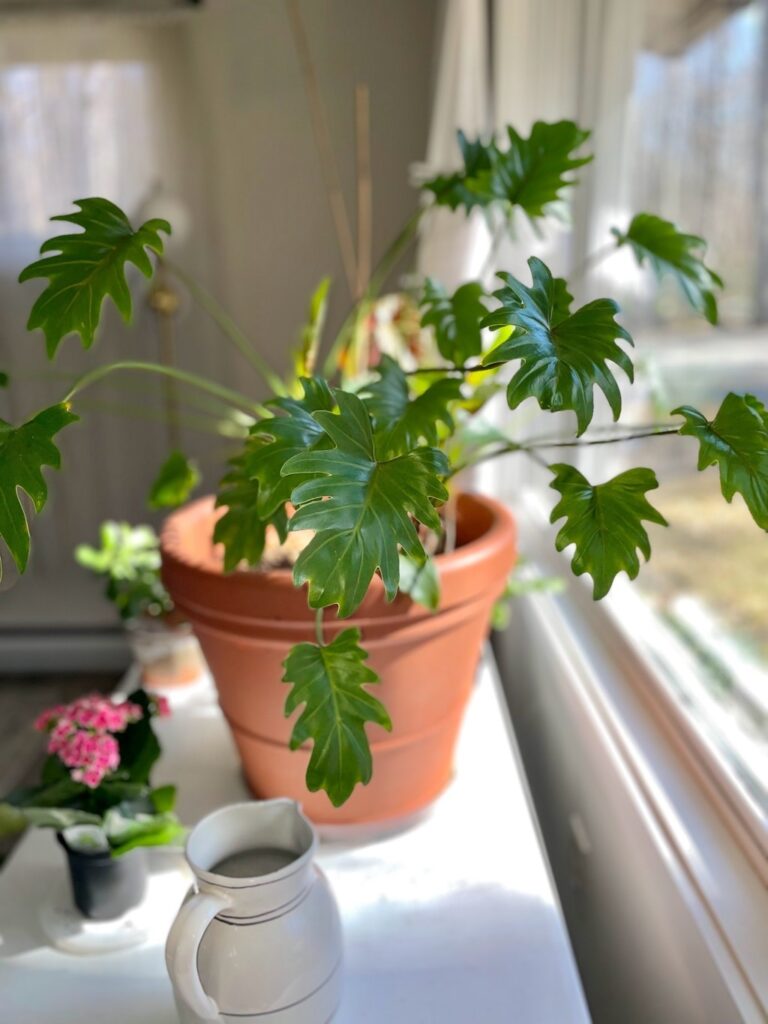
Go West!
Did you pick up on any particular theme while reading through this list of plants?
Go West!
To the windows with your houseplants.
At 3 feet away or less, west facing windows get 6-8 hours of direct sun in the afternoon. At 5 feet away or more, the light is indirect and much less intense. Most varieties of indoor plants will find ideal conditions within this range. But if a bit more bright light is required, try a south facing window, especially during the darker winter months.
Most common houseplants are from tropical or desert like climates and heavily favor hot temperatures and bright sunshine. And that’s exactly what you’ll get by making a west facing window their home.



